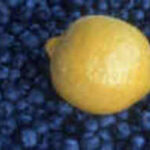When I saw Debbie Meyer’s Bread Bags at our local Bed, Bath & Beyond, I was eager to try them out. I wanted to stop wasting money on bread that would get moldy before we could eat it all, and Debbie Meyer promised me that we could save money by doing just that. I have had limited success with Debbie Meyer Green Bags for fruits and vegetables, so I was somewhat skeptical. Even so, I hoped that Debbie Meyer Bread Bags would keep bread fresher for longer.
I paid $9.99 for my box of Debbie Meyer Bread Bags. Each box contains 12 bread bags — or, as Debbie Meyer says, Bread Bags — ten extra large bags for regular types of bread plus two extra long bags for baguettes. This sounds rather expensive, but the box says Debbie Meyer Bread Bags are reusable, which appeals to my eco-warrior side. To reuse Debbie Meyer Bread Bags, you are instructed to simply rinse them out with cool water, preferably without soap, which appeals to my lazy side.
The instructions on the box of Debbie Meyer Bread Bags said to store each type of bread in its own bag, which makes perfect sense to me. They also said that you can reuse each Debbie Meyer Bread Bag for a different type of bread each time, so I wouldn’t have to keep track of which sort of bread product went where.
Debbie Meyer BreadBags are made in the USA and have been seen on TV. (Not by me, personally, but I’ll take their word for it.) I had a feeling that my new Debbie Meyer Bread Bags and I were going to get along just fine. I couldn’t wait to get them home from the store to start testing them out.
Will Debbie Meyer Brown Bags pass the sliced loaf test?
I am a brown bread kind of person. If it’s full bodied, full flavored and stuffed with enough fiber to keep a vegan regular for a month, then it’s probably sitting on my counter. My husband, on the other hand, has never lost his wonder for Wonder Bread. Fiber frightens him. I knew exactly where to start my experiments. As soon as I got home I opened my box of Debbie Meyer Bread Bags and got to work.
The ten “extra large” Debbie Meyer Bread Bags will easily accommodate a standard sized loaf of bread, a sourdough boule, or a dozen rolls, bagels or English muffins. I had just been grocery shopping and wanted to be as scientific as possible, so I started with two fresh loaves of bread: one loaf standard supermarket white sandwich bread, and one loaf of high-fiber, multigrain brown. I put half of each loaf in a Debbie Meyer Bread Bag, folding the end over as instructed, and kept the other half in its original packaging. From then on, I took one slice from the Debbie Meyer Bread Bag and one from the original packaging every time I made a sandwich.
The Result: the Debbie Meyer Bread Bags were the clear winner. The supermarket white sandwich loaf kept in its original packaging started to smell funny well before its sell by date. Its counterpart in the Debbie Meyer Bread Bag didn’t even start to lose its softness until a few days before its sell by date, although it only lasted a few days after.
The brown bread experiment was even more successful. The multi-grain sandwich loaf stored in a Debbie Meyer Bread Bag lasted over a week past its sell by date. In the months since I been using Debbie Meyer Bread Bags, I have been able to keep brown, high-fiber bread two weeks or more past its sell by date. It does start to dry out a little in the end, but since I always toast my bread, that makes no difference to me.
Will Debbie Meyer Bread Bags keep hamburger buns fresher, longer?
My husband likes his burgers on a sesame seed bun. I prefer an onion roll. The next time I made hamburgers, I put the leftover buns in Debbie Meyer Bread Bags, giving each type to its own bag as instructed, and sat back to watch what happens.
When it comes to sesame seed buns, the Debbie Meyer Bread Bags do an excellent job, keeping hamburger buns fresh past their sell by date. The onion buns were less successful, although they did stay fresh much longer in the Debbie Meyer Bread Bags than they would have otherwise. My guess is that it has something to do with the onions. One caveat: if your hamburger buns have been stored in Debbie Meyer BreadBags a long time past their sell by date, I would definitely plan on toasting them for the best flavor and texture.
I have since tested Debbie Meyer Bread Bags with other types of buns and rolls, and they work well. Rolls with a crispy crust will get rather soft after storage in Debbie Meyer Bread Bags, but that is easily remedied by a quick trip through the oven. Hot crusty rolls are generally nicer than room temperature, anyway.
I generally keep bagels in the fridge, so I don’t know how effective Debbie Meyer Bread Bags are in keeping them fresh. The Debbie Meyer Bread Bag package displays bagels front and center, though, so I don’t see why they wouldn’t work, especially if you plan to toast them.
Debbie Meyer BreadBags and Baguettes: a match made in heaven?
A package of Debbie Meyer Bread Bags includes two “extra long” bags for French bread and baguettes. The extra long Bread Bags accommodate a standard sized loaf of french bread, but are a bit two short for baguettes. That’s OK; I generally use fresh banquettes the same day I buy them, and leave them in the paper bag you get at the store or bakery until I’m ready for them. The extra long Debbie Meyer Bread Bags are plenty long enough for leftovers, and if you cut a long, skinny baguette in half there is plenty of room to store both halves in the same bag.
Most baguettes left over night become rock hard and unusable, but not if you store them in a Debbie Meyer Bread Bag. The nice crispy crust on a fresh baguette does suffer, losing much of its crispness, but that is not a problem. I just throw the baguette in a hot oven with a spritz of water for five minutes, and you would never know that your nice crispy baguette had spent a night — or even two or three nights — in one of Debbie Meyer’s Bread Bags.
Hints and Tips for using Debbie Meyer Bread Bags
Don’t let bread stored in your Debbie Meyer Bread Bags get too hot. It’s OK to keep it on the toaster oven like I do, but move bread stored in Debbie Meyer Bread Bags out of range while you’re actually using it. If you do so accidentally, wipe out the condensation with a paper towel and leave the end open for a while to let excess moisture evaporate and prevent mold.
If the bread stored in a Debbie Meyer Bread Bag does get moldy, don’t try to wash out and reuse the bag like you usually do. Soap won’t help either: the next time you use that particular Bread Bag, it will be Mold City. Suck it up and throw that bag away– it’s toast.
My final verdict on Debbie Meyer Bread Bags
Debbie Meyer Bread Bags do a great job preserving high-fiber multigrain bread well past its sell by date. Debbie Meyer Bread Bags also do a good job keeping sliced white sandwich rolls and buns. Most of all, I am thrilled that I no longer have to throw away baguettes and French bread after just one day — after all, how much bread crumbs and croutons does a gal need? In fact, the only things I’ve found that doesn’t keep just as well, if not better, in Debbie Meyer Bread Bags are corn tortillas and some (but not all) flat breads sold in zip lock packaging.
In the four or five months since I started using Debbie Meyer Bread Bags, I have indeed saved money by eliminating waste, and I have no doubt that my Debbie Meyer Bread Bags have already paid for themselves several times over.



